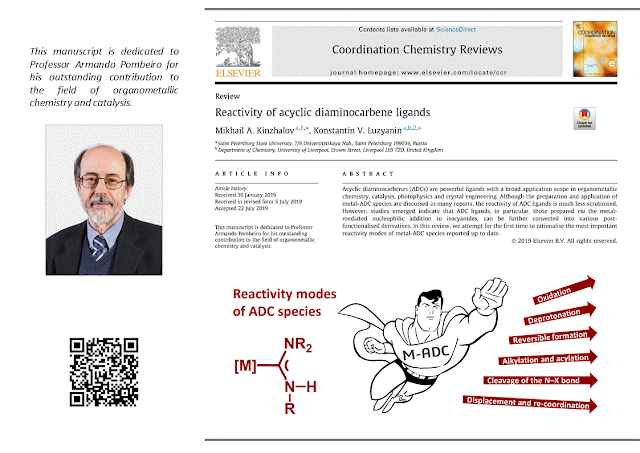Iridium(III)-catalysed
cross-linking of polysiloxanes leading to the thermally resistant luminescent
silicone rubbers
 |
| Isocyanide Iridium(III) complexes as catalysts for cross-linking of polysiloxanes |
Free full text article Catal. Sci. Technol., 2017,7, 5843-5846
In pursuit of our studies,
we designed a series of cyclometallated iridium(III) catalysts for the
cross-linking of vinyl- and hydrogen-functional poly(dimethylsiloxanes) that
work exclusively at temperatures above 100 °C. Maximum efficiency is achieved
in the 150–180 °C temperature range, where curing is achieved within 5–50 min
without requirements for an inhibitor. The silicone compositions prepared using
our catalysts showed mechanical properties comparable and thermal stability in
air well above of those achieved with Karstedt’s catalyst. In
addition, we measured luminescence emission profiles for our catalysts and for
the corresponding silicone compositions prepared, and developed a procedure for
the immediate measurement of the coating thickness based upon optical detection
– a rare approach in polymer science and manufacturing.
 |
| Preparation of catalysts for cross-linking of polysiloxanes |
 |
| Phosphorescence spectra for (left) solutions of 2, 3, and 5 in CH2Cl2 (1.0×10–4 M), and (middle) rubbers obtained with catalysts 2, 3, and 5 (initial catalyst concentration 1.0×10–4 M). (right) Plot of emission at 408 nm as a function of film thickness for a silicone composition obtained with 3; linear fitting (correlation coefficient was 0.99457). |
 |
| Luminescent silicone rubbers |







